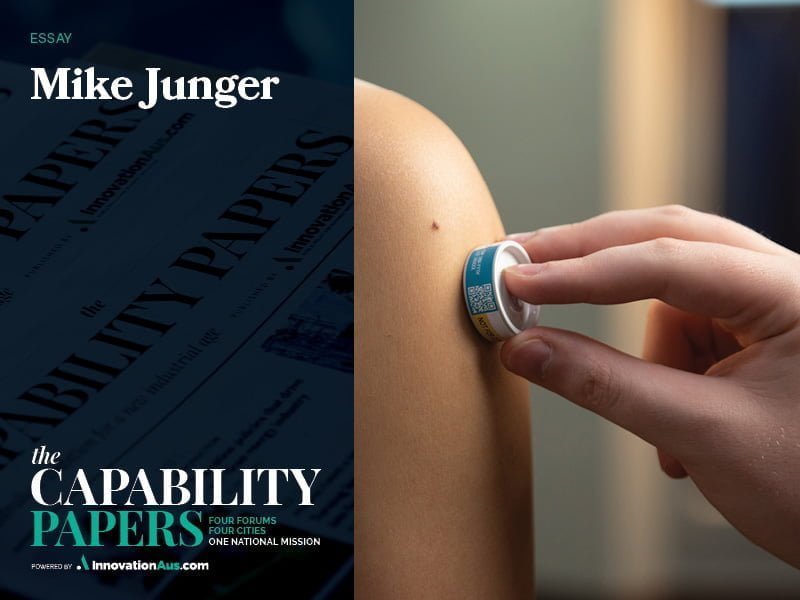COVID has taught us lessons about self-reliance, global supply chain disruption and the possibilities for rapid vaccine development and deployment. As we emerge from the pandemic, do we have a genuine sovereign manufacturing capability to reduce the human and financial impact of the next pandemic on our population and the economy?
In addition to pandemic threats, other factors like global warming are increasing the risk posed to Australia of diseases already at endemic levels in more tropical climates. Diseases such as the mosquito-borne Japanese encephalitis virus (JEV) thrive in warmer, tropical climates and could become more prevalent on Australian shores.
The case fatality rate among those symptomatic with encephalitis can be as high as 30 per cent, and of those who survive, permanent intellectual, behavioural, and neurological sequelae can occur in an additional 30 per cent of cases.
Asia has an estimated 68,000 JEV cases per year. As of 24 February of this year there have been 45 noted human cases of JEV in Australia and seven deaths, occurring as far south as Melbourne.

Other mosquito-borne diseases such as dengue, yellow fever and West Nile Virus are other infectious diseases that, with global warming, have the potential to gain prevalence in Australia. All these diseases, except for the West Nile Virus, are preventable with established vaccines.
The financial impact of the COVID-19 pandemic on the Australian economy will be felt for generations. The pandemic highlighted our reliance on other countries for the development and supply of vaccines, along with the PPE and syringes to deliver them.
By not having the resources on hand to meet the demands of the population during this time, our country was at the mercy of trading partners who did. And several key international trade and supply agreements were discarded in the rush for sovereign protection.
The net result was a call to arms and push for sovereign manufacture of Messenger RNA (mRNA) vaccines. Investing in the infrastructure to manufacture a vaccine is commendable. However, to provide protection these vaccines must be stored, distributed, and administered to the population in an efficient and timely manner. The existence of a vaccine affords no protection in the absence of effective vaccination.
It should be highlighted that the cost of administering a vaccine is more than twice what it costs to manufacture it. Government policy needs to consider a wholistic approach to vaccine development and deployment, not just vaccine manufacture itself.
So, do we have the technology to improve pandemic outcomes and the infrastructure needed to produce it? What investments are being made to close the loop on delivering vaccines to patients using an Australian-made, and therefore accessible, product?
Australian biotechnology company Vaxxas leads the way in the development of high-density, microarray patches (MAPs), a technology to replace the needle and syringe that can increase the coverage and distribution of vaccines.
These small patches are covered in a high-density array of micro projections, the tips of which are coated with the vaccine. The micro projections breach the skin and deliver the vaccine to the abundance of immune cells just below the surface.
MAPs can fundamentally change the way we respond to pandemics and the rising threat of endemic diseases. They can be more easily distributed to reach populations challenged by their remoteness, climate, and infrastructure, and have the potential for lower skilled or self-administration.
Clinical studies have found that MAPs have the following benefits over traditional intramuscular needle and syringe (N/S) delivery:
- Use as little as a sixth of the vaccine dose.
- Can remain stable at room temperature, removing the need for a complex cold chain delivery and storage.
- Are less invasive and have the potential to be sent by mail and self-administered safely.
Over the past 10 years, multiple vaccines have been successfully tested on MAPs in clinical trials to ensure technology readiness and maturity. The business case challenges relating to manufacture have been interrogated and refined, and investments made to begin building the manufacturing infrastructure required to support quantities for late-stage clinical studies, product registration and early-stage commercialisation.
Switching from intramuscular injections to MAP technology could completely change the outcome of future pandemics and leave us better prepared for coping with the influx of new diseases.
Vaxxas provided funding for a study by an internationally regarded research firm. The study proposes that MAP technology has the potential to increase access to vaccinations and ease the financial strains placed on an economy by pandemic and endemic disease.
If Australia is to avoid a repeat of past failures in supporting Australian technology in areas such as critical vaccine coverage and distribution, our government needs to financially support the funding of infrastructure and clinical studies for relevant technologies, including MAPs as a vaccine delivery platform.
Vaccination technologies are foundational to ensuring Australia is safe and secure and are the basis of future defence, intelligence, and national security capabilities.
BioTech is regarded as a long-term investment opportunity with associated product development risk. To reach commercialisation requires complex production facilities to manufacture products, spending five to seven years going through clinical studies and then, if successful, waiting 12-18 months for regulatory approval and registration. It’s a long-term commitment but the impact can be generational, nation building, and the ROI significant.
Given the rising threats posed by pandemics and emerging endemic diseases, the level of funding required to address such threats is not supported by current incentives and grants. In addition, economic conditions worldwide have severely limited private investment in such activities.
Under these circumstances, the government can play a key role, ensuring potentially transformative Australian technologies can be supported through funding vehicles that enable continuation of development in Australia, and making the resulting products available to the general population in an expedited fashion.
Not supporting domestic manufacturing and commercialisation has significant consequences. For example, the Gardasil HPV vaccine developed in Queensland by Sir Ian Frazer and Jian Zhou, is expected to have a market value of US$12.69 billion by 2027. But Gardasil is not manufactured in Australia, representing a profound loss for the Australian people and economy.
In MAP technology, Vaxxas has a first-mover advantage, but Australia will benefit only if Vaxxas can get support for the creation of Australian based production and commercial capabilities. And that first-mover advantage will only last for so long as international competitors play catch-up in the MAP space.
It is important to note that Vaxxas’ MAPs have one attribute that significantly lowers the risk profile relative to other vaccine developers. The MAP platform has been developed in large part to improve existing vaccines that have already been approved and proven effective in millions of patients.
In most cases, this means that Vaxxas is not attempting to prove the efficacy of a given vaccine. The MAPs are deployed to increase the effectiveness of that vaccine, or improve its safety, or enhance the ability to distribute and administer an already approved vaccine.
The return to Australia for supporting Vaxxas’ MAP technology could be substantial. For example, in a 2022 study by US company Avalere, the authors found that if just 10 per cent of vaccines administered in the US in the first two years of the pandemic had been delivered more rapidly by using MAP technology, the US would have faced 16.3 million fewer cases (35 per cent), 200,000 fewer deaths (30 per cent) and economic losses reduced by US$516 billion (a figure estimated to be $2.3 trillion globally).
Australia urgently needs to develop its capabilities to manufacture vaccines and deliver them efficiently to the Australian people. Without this capability, we are reduced to stockpiling overseas supplies and therefore remain at the mercy of vaccine manufacturers.
More specifically, creating infrastructure to manufacture new MAP technology locally can give Australia a clear advantage over using imported needle/ syringe-based vaccines. This can generate significant income in the years to come. A by-product of this investment is the attraction of overseas interest in MedTech development in Australia, and an increase in local clinical trial activities.
Backing MAP technology would not be unique to Australia. Currently two large pharmaceutical vaccine companies are backing Vaxxas. The US is also investing substantial amounts into the clinical development of Vaxxas’ MAP technology in the field of pandemic influenza and has funded the scoping of a US-based large-scale MAP production facility for Vaxxas.
The Bill and Melinda Gates foundation is financially supporting MAP technology clinical development for measles and rubella, and the Wellcome Trust is funding preclinical and clinical work for addressing Typhoid with a MAP-delivered vaccine.
In addition to supporting Vaxxas in the development of a vaccine for pandemic influenza, more broadly, the U.S. Government has identified skin patches as one of the foundation technologies guarding its future security in the face of threats similar to COVID-19. This was expressed by The White House in section 1.4 of a report issued in 2021 titled “American Pandemic Preparedness: Transforming our Capabilities”:
“(1.4) Vaccine administration. Enable rapid, large-scale vaccination campaigns, by simplifying vaccine administration – for example, replacing the need for sterile injection with skin patches and nasal sprays and the need for multiple doses with time-released formulation.”
There is now a tremendous opportunity for the Australian state and federal governments to do the same. Vaxxas’ microarray patch platform technology can help to address Australia’s need for sovereign manufacturing, protect against emerging bio threats, and build a vibrant domestic biotech industry.
To do this, we need government policies, including funding mandates, to recognise and support these opportunities so that we don’t lose the ability to protect our citizenry and allow Australian-grown companies and technologies to migrate to overseas markets out of necessity.
Mike Junger is SVP Advanced Technology at Vaxxas. He has worked as a pharmaceutical machine designer, medical device engineer, process engineer, R&D manager and in business development. His early career in toolmaking and machining led to model making for industrial designers and formal study in mechanical engineering design, project and team management. He has developed several novel medical devices, introduced new manufacturing processes and owns multiple patents in the medical device field.







